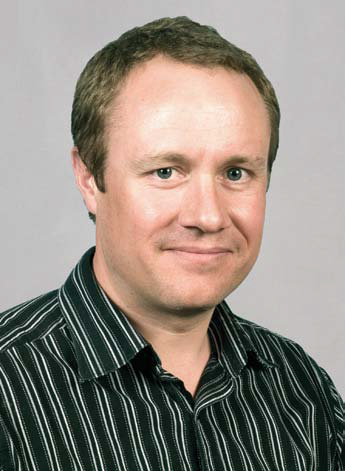Managing Multiscreen Distribution
BALTIMORE—On your desktop. On your laptop or in your lap. And from the handheld. While the diversity of choices from which to watch a video clip or a TV show has never been greater, it also means content providers and the manufacturers of multiplatform technology have to accommodate the various needs of their customer base.
The vendors also have to make sure that they have the appropriate options for their customers. After all, who wants to pay for a system with so many bells and whistles that it goes way beyond what’s necessary for increasing revenues?
ALL FOR ONE?
That question was addressed by Paul Turner, vice president of enterprise product management with Nevada City, Calif.-based Telestream, which initially offered its flagship product, Vantage, as an all-in-one box with several outputs.

The RCA Mobile TV Tablet offers the Dyle mobile DTV service. The company quickly realized however, that not all of its customers wanted to pay extra for that kind of flexibility. “We tried to market it as one product that covered everything, all singing, all dancing,” said Turner. “It was a great marketing ploy. But some customers only wanted VOD and would ask why they were paying for the other services.”
So now, Vantage comes in three “flavors:” One for TV stations that move high bit-rate material of up to 144 Mbps; one for VOD users, which moves data at 10-12 Mbps; and multiscreen, which is generally not above 5 Mbps. So, if a customer only wants to buy the multiscreen version for general transcoding, Turner said he or she can.
In the end, it’s about ease-of-use. “We attempt to get the content to the user without the content buffering,” Turner said. “That’s the entire concept behind multiscreen. And the higher quality the picture is, the longer the viewer stays engaged; and the ads they see, the more revenue is produced.”
The approach to achieve that end at Imagine Communications is to offer different products, such as the software compression tools SelenioFlex Live and SelenioFlex File, which “allow us to take in baseband SD or HD, and produce the adaptive bit-rate,” said Mark Senecal, manager of product management for the Frisco, Texas-based company. “They allow a station to use ABR to deliver a full linear feed of the content to all of the multiscreen users.”
The professional video industry's #1 source for news, trends and product and tech information. Sign up below.
TV stations have their own assets that may be tied to other networks, like archives, local broadcasts, etc., Senecal said, “so we take SelenioFlex Live to ingest that content and transcode it for multiscreen use.”
The two SelenioFlex technologies can be combined with Imagine’s Selenio Media Convergence Platform, which provides linear broadcast compression for delivery of main screen and additional channels for HDTV broadcasts.
“Our strengths are offering a full platform that allows the user to combine all encoding, baseband processing, PSIP insertion and multiplexing stat mux,” Senecal said.

Grass Valley Stratus DMPMAKING IT SCALABLE
The approach at Montreal-based Grass Valley is to offer a key strategic solution, in this case the Stratus Digital Media Platform, or “DMP.”
“Stratus DMP is an extremely scalable service-oriented-architecture platform that will continue to grow and integrate with our product line portfolio for news, live sports and entertainment, and playout applications,” said Alex Holtz, director of segment marketing and digital media at the Montreal-based company, explaining that “digital media is one of many modules of this workflow platform for ingest, editing, production, publishing and playout.”
Stratus DMP can also integrate with Grass Valley’s Ignite control room automation system to take full advantage of automated processing, to increase publishing throughput and efficiencies. Stratus addresses, Holtz said, “the four major digital media workflows: Preproduction VOD, post-production VOD, live streaming with content replacement, and 24/7 live web and mobile channels.”
Live streaming with content replacement, he said, allows “replacement, in real time, of embargoed materials, with approved materials during the live stream. That means we can tell stories one way for TV and another way for mobile devices. Then with the automated VOD segments, content that dynamically changes such as traffic and weather can auto-populate playout for hyperlocal-type channels, using the concept of a video-based newspaper—categorized and targeted to a specific targeted audience.”
In the past, the business cycle has always been facility-centric, “but moving forward, the business cycle expands into the digital media ecosystem,” Holtz continued. “It will employ many processes that are enabled by the Internet, such as web-enabled devices like smart TVs, web apps, websites on laptops or mobile devices.”
SOCIAL FROM THE WEB
Media | Distribute (formerly Interplay Pulse) is Avid’s entry in the market, and includes a Media Suite module that runs on top of the Avid MediaCentral Platform, an open, customizable foundation that streamlines workflows by integrating all products and services.
The latest version offers scheduling of social media posts linked to stories in the iNews rundown. It also enables on-air and web journalists to share assets and stories by automating content, sharing between iNews and a web CMS to improve overall asset re-use and minimize redundant content acquisition.
“What our customers need is essentially one interconnected platform that fuses content creation with distribution and monetization, and brings media organizations much closer to [their audience],” said Ray Gilmartin, senior director, product and segment marketing.
Ross Video offers Inception News, a newsroom computer platform, that in addition to handling linear news television production, also enables the creation, management and publication of nonlinear content for digital outlets; like Avid, Ross’s technology is notable for integrating web and social media elements.
“Publication to the web and social media, alongside the production of linear content, are now a mainstream requirement for most broadcast and production organizations,” said Jeff Moore, executive vice president and chief marketing officer for Ross Video in Iriquois, Ontario. “Tools like Inception are being deployed now to increase efficiency of content creating staff.”
UP IN THE CLOUD
Dalet takes a three-pronged approach offering Galaxy MAM, AmberFin transcoding and Dalet Brio video server platforms. To support industry demands, the company is introducing a number of features across the platforms.
They include extending the (AT)3 temporal transform tools with GPU-accelerated frame-rate conversion in Dalet AmberFin, advanced new “track stacking” capabilities in Dalet Galaxy, simplifying multiversion workflows, and the combination of the Dalet Cube graphics engine into its video server platform to create the new Dalet Brio3, reducing complexity in the playout chain.

Karl Mehring, head of product architecture for Snell “Growing and varied consumer demand, accompanied by the increasing availability of the virtualized and cloud infrastructure will [mean] significant changes in the industry; not necessarily in terms of the technology we use, but in the way that technology is packaged and deployed to support changing business models,” said Ben Davenport, Dalet’s director of marketing.
Snell’s multiplatform offerings include Morpheus Playout Automation, which, with its ICE Channel-in-a-Box, is designed for TV stations and VOD customers; and Momentum Media Management, which is geared for the ’net, tablets and smartphones. The technologies combine with the new Quasar, a year-old product which is targeted towards the VOD market on any platform.
According to Karl Mehring, head of product architecture for U.K.-based Snell, the company will be introducing additional new products in the VOD realm, noting “the need for cloud-based systems that enable users to scale their operations.
“TV stations obviously need to store a lot of content, but other clients who are starting new distribution channels may also end up needing to store a considerable amount of content,” he said.
Even though traditional TV is hardly going down in terms of consumption, he was quicker to note that multiscreen is going nowhere but up. “So, there are more opportunities to distribute more media,” Mehring said, “which also means that that particular content needs to be stored.”
Mark R. Smith has covered the media industry for a variety of industry publications, with his articles for TV Technology often focusing on sports. He’s written numerous stories about all of the major U.S. sports leagues.
Based in the Baltimore-Washington area, the byline of Smith, who has also served as the long-time editor-in-chief for The Business Monthly, Columbia, Md., initially appeared in TV Technology and in another Futurenet publication, Mix, in the late ’90s. His work has also appeared in numerous other publications.

